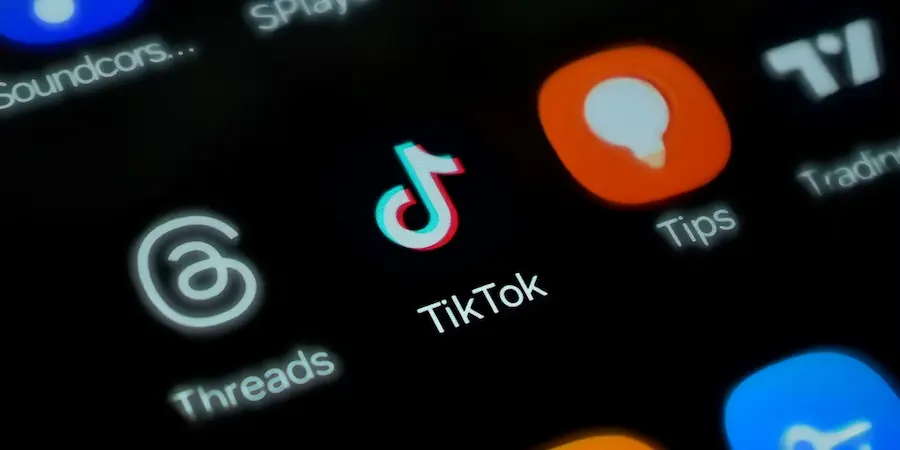If you scroll through TikTok, you’ve surely seen couples, friends or siblings huddled at a table trying to guess whether the other is lying about a hidden object. It’s the lie challenge, a viral game as simple as it is addictive, where the fun lies in detecting the truth by ear, logic and nerves of steel. Will you be able to unmask the person next to you or will they pull off a full-blown auditory “clickbait”?
The mechanics are foolproof: two people sit together, place a barrier between them to hide their objects and announce what they have in front of them; there’s the twist, because they can tell the truth or spin a lie. After that, they take turns making requests and asking questions to try to find out if what’s being said matches what is heard. It’s almost a domestic Turing test: you decide whether the signal is genuine or a well-executed bluff.
How to play step by step
First, each participant chooses a small household object, one you can easily hide behind a book, a box or a couple of cushions. A comb, scissors, a pen, a shoe, a bottled drink or a candle are perfect options. Before starting, each person decides whether they will tell the truth or lie about what they have.
Then, sit at a table side by side and raise a barrier that prevents you from seeing each other’s objects. Anything goes: stack board games, use a thick pile of books or even play on the floor leaning against a wall. If you want to record it for TikTok, leave a gap to prop up your phone so viewers can see both objects and follow the suspense in real time.
The initial declaration arrives: each person announces their object. From that moment on, players alternate turns asking for specific actions to test the other’s story. “Flip pages”, “tap it on the table”, “open and close it”, “make it roll”… The key is to listen closely to see if what you hear matches what it’s supposed to sound like.
Keep chaining turns until both of you are confident in your verdict. There’s no time limit or fixed number of rounds; in videos there are usually 5 or 6 exchanges, but you can extend it as long as you like. At the end, each person says whether they think the other is lying or telling the truth, the barrier is removed and the reveal happens. The one who guesses correctly wins; the one who’s wrong learns for next time.

Tips to deceive (and to detect lies)
If you decide to lie, pick an object whose sound resembles that of another. That similarity is your shield. A paperclip can be mistaken for a hairpin or a needle; a jam jar can sound like a candle in a jar; a stiff folder can “imitate” a book if you move it rhythmically and hit its edge. Rehearse actions that produce the right sound: shake, roll, press, tap or open/close decisively so your story is believable.
The truth-teller can play, too: exaggerating a gesture, making a strategic pause or introducing a small mistake are valid resources to sow doubt in your opponent. Yes, telling the truth doesn’t preclude misleading—here the meta-game is real.
If you’re on the detective side, use your ears like a studio microphone. Ask for actions that clearly differentiate the suspicious objects: bouncing a ball doesn’t sound like gently setting down a cup; flipping pages is not easily confused with shaking a folder. Also pay attention to the “latency” of responses: if the other person takes a bit longer to execute something, they might be searching for a way to replicate the promised sound, as if their mental ping spiked. Human tells also work: tone of voice, nervous laughter, odd silences; the sound matters, but behavior speaks too.
One final note: if you’re lying, avoid requests that corner you; steer the game toward actions you can emulate convincingly. And if you’re investigating, request gestures that reveal the material or shape of the object. Your goal is to turn audio into your verification algorithm.
Variations and other viral challenges for two
Although it started as a couples’ game to see how well you read each other, it works just as well with friends, siblings or family. In fact, its setup is flexible: both can lie, both can tell the truth, or one can mislead while the other stays honest. The fun is in the mix.
Want more? There are other challenges to share laughs. The “one-handed pick-up challenge” proposes lifting the other person with one arm wrapped around their legs: it can be sweet… or end in laughter. The “trust my wife challenge” involves one person sitting with an empty glass on their head while the other tries to knock it off by throwing a soft object; as you can imagine, it requires trust (and good aim). And the “balance challenge” asks you to stand back-to-back, lower into a squat and find balance by placing a leg on the partner’s thigh: you might sync perfectly or end up on the floor, but laughs are guaranteed.
In short, the lie challenge is easy to set up, needs nothing more than everyday objects and an improvised barrier, and works brilliantly on video because viewers see what you don’t. Bring out your observational side, tune your ear like you’re calibrating a podcast and, above all, enjoy the game. Ready for the next round?

